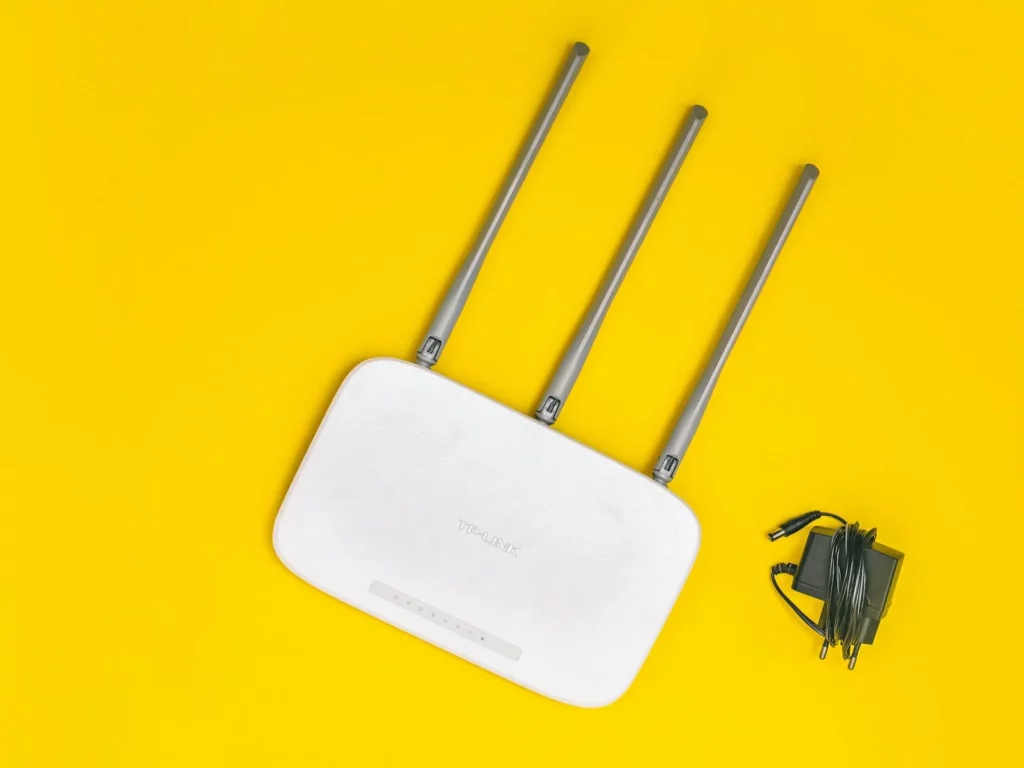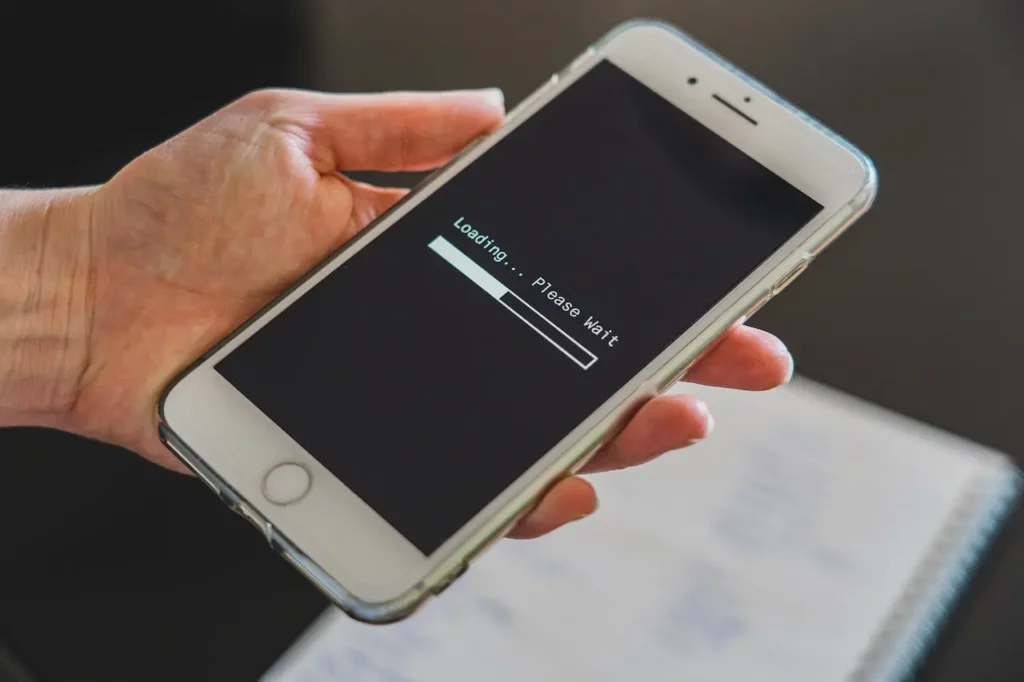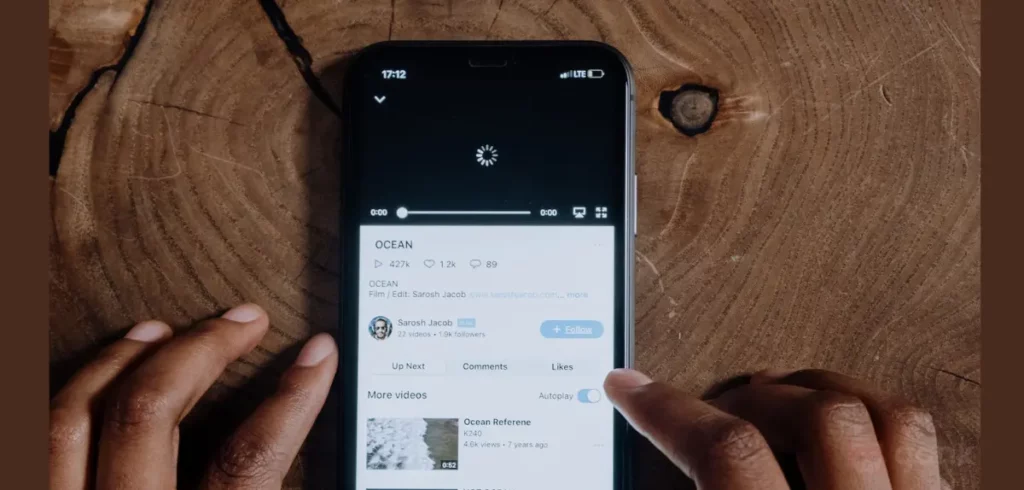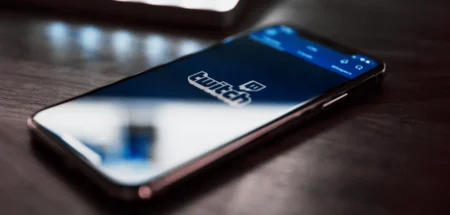“I have high-speed internet but slow buffering. How do I solve that?”
It is understandable to ask the question above, especially if you have registered for a fast internet plan to watch your favorite shows or live streamers without interruptions.
The fact is, many factors can cause streaming issues despite you having a good internet speed for streaming, from network bandwidth to insufficient hardware. We will discuss some of the most common reasons and their solutions in this article.
So, read on to learn how to fix streaming problems.
What Is Buffering?
Before we look at the causes and solutions for the “I have high-speed internet but slow buffering” problem, it is important to understand buffering itself. Buffering is the process of downloading media files into your device as you stream them.
Ideally, the download happens ahead of time so that viewers can enjoy the media without any delay. However, this process can slow down or even stop if a problem happens to your internet connection, device, or the streaming service you use.
If you say “I have high-speed internet but slow buffering”, we can rule out your connection speed from the factors. Nevertheless, there are other possible causes of streaming issues, which we will talk about in the next section.
I Have High-Speed Internet but Slow Buffering: What Causes It?
Below are some of the most common factors that may present streaming problems and how to fix them:
1. Network Settings
If you use a home internet and often face slow buffering when watching online media, one of the reasons is certain network settings, mainly the quality of service (QoS) and WiFi frequency band.
While internet providers configure these settings for stability, it can affect network performance. Thus, it may prevent you from getting the best streaming experience.
With that in mind, you can try optimizing network settings with the following methods to solve the “I have high-speed internet but slow buffering” problem
Change Your QoS Configuration
The quality of service or QoS is a set of rules that can be used to divide your network’s bandwidth for different devices, apps, or types of services.
Normally, there are no QoS rules set for your network. As a result, the available bandwidth is given equally to concurrent data traffic.
Unfortunately, that can lead to the “I have high-speed internet but slow buffering” problem because media streaming requires a lot of bandwidth. If too much bandwidth is used for other activities, you will most likely experience slow buffering.
To prevent that issue, you need to prioritize the bandwidth for media streaming over other activities by tweaking the QoS. Thus, your buffering speed will not be as compromised when some other people in the house browse the internet while you are streaming a video.
So, how to set a QoS rule? While the exact method differs between WiFi router brands, QoS configuration usually requires you to log into your router’s admin page. For that reason, you will need to consult the manual book that comes with your router.
Change Your WiFi Frequency Band Setting
The “I have high-speed internet but slow buffering” problem can happen because of the WiFi frequency band you use. Frequency bands are ranges of radio wave frequencies used to carry data.
Commonly, WiFi routers have two frequency bands: 2.4 GHz and 5 GHz. While the 5 GHz band is faster, internet providers usually set your router to use the 2.4 GHz band for its farther reach.
That being said, changing to the 5 GHz frequency band will enable you to reduce buffering while streaming. Though, remember that you should be at least in the same room as your router to avoid the “I have high-speed internet but slow buffering” problem.
Changing your WiFi frequency band is similar to tweaking the QoS configuration, which involves accessing your router’s admin page. So, you need to check the steps in the router’s manual.
2. Bandwidth Usage
With optimized network settings, streaming problems can still happen if you are not mindful of bandwidth usage. Due to that, you should practice the steps below to reduce buffering.
Disconnect Devices from the Network
Individual WiFi routers like the ones used for home internet can be connected to dozens of devices. However, that does not mean you should connect many computers and phones at the same time.
Having a couple of devices that access the internet simultaneously will create network congestion. This can happen because the router will regularly ping the connected devices. As a result, you will face the “I have high-speed internet but slow buffering” problem.
For that reason, disconnecting unused phones and computers can relieve you from streaming issues.
Stop Uploads and Downloads when Streaming
Having a fast internet connection may tempt you to download big files like games or software updates while doing other online activities. Or, you may want to upload a lot of files at the same time. Unfortunately, doing so will eat a lot of bandwidth.
If you do not want to experience the “I have high-speed internet but slow buffering” problem, it is wise to save the downloads or uploads for some other time. Or, you can prioritize the bandwidth for streaming activities by creating a QoS rule, though it will make your download and upload slower.
3. Poor WiFi Signal

In case your live stream keeps stopping even after optimizing network settings and managing your bandwidth usage well, it could be because of a poor WiFi signal. There are a few ways to counter this streaming issue, which we will talk about below:
Remain within the Router’s Reach
One of the reasons for a weak WiFi signal is that you are out of its reach. The signal of the 2.4 GHz band extends to 150 feet, whereas the 5 GHz band reaches 50 feet.
While that sounds far enough, solid objects and microwaves can interfere with your WiFi signal. Therefore, you can face the “I have high-speed internet but slow buffering” problem even if the router is only a few rooms away.
To solve that, you need to know where the WiFi signal is the strongest. You can do it by checking the connection speed using tools like Ookla in different rooms.
If your house is big enough, consider installing a WiFi extender near where you often relax while enjoying live streams. This way, you can still be able to get a good wireless signal.
Reset Your Router
Network routers can run out of memory every once and then, which results in a bad performance. In this state, problems like poor signal can occur.
Fortunately, most of those problems can go away with a router reboot. You can do it by turning off the router for 10 seconds. So, next time you experience the “I have high-speed internet but slow buffering” problem, you can try this method.
Use A Wired Connection Instead
Wireless internet connections enable you to go online from many places around the house. However, they cannot beat wired connections in terms of data delivery.
Because of that, connecting to your home network using an ethernet cable may reduce buffering and improve your streaming experience. Most PCs and smart TVs come with ethernet ports, so do not worry about compatibility.
4. Limitations of Your Internet Provider
You have tried all steps we mentioned, but still have the “I have high-speed internet but slow buffering” problem. What should you do next?
Some factors that cause streaming issues are out of your control. These include your internet provider’s policy and quality.
For example, some providers may throttle or decrease their customers’ connection speed when there is significant bandwidth usage. While they do so to prevent malicious activities, it will prompt slow buffering during streaming.
Apart from that, your provider’s infrastructure may not be able to handle lots of traffic to begin with. When that happens, you will see a substantial decrease in your internet speed.
While you cannot change those factors, the following solutions may help solve the “I have high-speed internet but slow buffering” problem:
Use A VPN
A virtual private network or VPN is a service that allows you to browse the internet anonymously by hiding your activities and data traffic. Thus, you can stream without triggering your internet provider’s throttling policy.
Make sure you choose a reputable VPN if you want to do this method for solving streaming problems. There are free ones out there, but many of them come with security risks.
Stream Outside Peak Hours
Should your internet provider cannot handle heavy traffic, it is wise to watch live streams outside peak hours, such as noon and evening. This way, you can reduce the possibility of the “I have high-speed internet but slow buffering” problem.
Alternatively, you may download your favorite shows or recorded live streams when the connection is fast. Thus, you can avoid slow buffering.
5. Problems Within Your Device

Apart from the limitations your network provider presents, your device or the way you use it may cause streaming issues. So, how do you deal with that? Let’s find out below.
Close Unused Programs or Apps
Depending on your device’s specifications, your PC or smartphone may not be strong enough to run multiple apps together. That is why your video streaming may not be smooth when you have a couple of browser tabs open.
Due to that reason, it is best to close other apps while you are watching a show or live stream. Doing so allows your device to reserve its resources, hence preventing the “I have high-speed internet but slow buffering” problem.
Clear Browser Cache
Web browsers store temporary data or cache in your device. By doing this, the browser can load web media quicker when you access them again.
However, the cache can expire if the media’s data changes. This can cause an unnecessary process that slows down video buffering.
To avoid that problem, you should regularly clear your browser’s cache. The exact steps for each web browser are different, but they usually provide a menu that you can easily access.
Turn Off Hardware Acceleration
In computers, hardware acceleration refers to the ability to improve processing power. It will result in smoother menu animation, gaming experience, and media playing.
While this feature stays true to its name on high-end PCs and laptops, it can reduce the performance of old or low-end devices instead. In return, you may face the “I have high-speed internet but slow buffering” problem.
Programs these days have the option to turn hardware acceleration on and off. To check if this feature is on, you should open its settings and look for the said menu.
Update Graphics Card Driver
A graphics card is a component in your device that affects the ability to process images. With an older model, your computer or smartphone may not have the necessary power to run recent streaming apps or browsers smoothly.
Upgrading to a device with a newer graphics card may be difficult because of the cost. However, some graphics card models receive free driver updates from their manufacturer. These updates can give a better performance to reduce the “I have high-speed internet but slow buffering” problem.
Updating your graphics card driver is easy. On Windows computers, you only need to right-click on the start menu and click on Device Manager. From there, click Display Adapters, right-click your graphics card name, and choose Update Driver.
I Have High-Speed Internet but Slow Buffering: Wrap Up
There are many reasons that cause streaming issues, such as slow buffering. Some of the most common are:
- Network settings
- Bandwidth usage
- Poor WiFi signal
- Limitations of your internet provider
- Your device’s internal problems
By reading this article, however, you have learned how to fix streaming problems with a couple of methods. They may include but are not limited to changing bandwidth prioritization, using a VPN, and turning off hardware acceleration.
We hope this article can improve your video streaming experience. If you want more insights about online content, feel free to subscribe to our blog!









No Comments
ко ланта ко лант
Your comment is awaiting moderation.??????
Your comment is awaiting moderation.ca do the thao qua mang
Your comment is awaiting moderation.https bsme at
Your comment is awaiting moderation.onyx-55
Your comment is awaiting moderation.пляж клонг нин ко ланта
Your comment is awaiting moderation.аренда складных строительных лесов Аренда легких строительных лесов: Легкие строительные леса идеально подходят для небольших ремонтных работ, отделки или покраски фасадов. Аренда таких лесов позволяет быстро организовать рабочее пространство без необходимости в сложных монтажных работах. Легкость транспортировки и установки делают их незаменимыми для мобильных бригад и частных лиц, занимающихся ремонтом и обслуживанием зданий.
Your comment is awaiting moderation.ca cuoc the thao online
Your comment is awaiting moderation.прогнозы на баскетбол Ставки на спорт – это азартное развлечение, требующее аналитического подхода и понимания стратегий. Современный мир беттинга предлагает широчайший выбор возможностей: от классических видов спорта до киберспорта и экзотических дисциплин. Однако, важно помнить, что успех в ставках на спорт – это не только удача, но и результат кропотливого анализа, изучения статистики и учета множества факторов.
Your comment is awaiting moderation.Курск вакансии Открыт набор во многих компаниях, и они готовы предложить “бесплатные собеседования” и “конкурс кандидатов”. Покажите свои профессиональные компетенции и навыки коммуникации!
Your comment is awaiting moderation.сайт трипскан Трип скан: Сравните цены на авиабилеты от разных авиакомпаний и найдите лучшие предложения для своей поездки.
Your comment is awaiting moderation.данные по остаткам на складе Обновление остатков Яндекс: Автоматическое обновление остатков товаров на Яндекс Маркете. Поддерживайте актуальную информацию и повышайте конверсию.
Your comment is awaiting moderation.трипскан Трипскан сайт вход — это разговор о входе на страницу аутентификации и доступе к персональным данным. Основные принципы — единая точка доступа, безопасная авторизация и понятное оповещение о статусе входа. В корпоративной среде вход может поддерживать единый вход (SSO) и многофакторную аутентификацию, чтобы снизить риски несанкционированного доступа. Пользователь ожидает быструю загрузку, прозрачные уведомления и защиту данных во время передачи.
Your comment is awaiting moderation.трипскан сайт вход сайт трипскан — акцент на веб-ресурс, где пользователь может изучать сервис, пробовать поиск маршрутов и знакомиться с интерфейсом. Такой текст часто посвящает обзорной функциональности — как работает поиск, какие данные используются (погода, расписания, тарифы), какие фильтры доступны (пересадки, продолжительность, класс обслуживания), какие типы предложений появляются на экране результатов, и какие действия можно совершать: сохранять маршруты, делиться ими, экспортировать в календарь. В контенте также важно рассказать об адаптивности сайта, совместимости с мобильными устройствами, а также о скорости загрузки и доступности. В SEO-секции можно упомянуть варианты запросов ‘сайт трипскан’, ‘tripscan сайт вход’, ‘трипскан ссылка’, чтобы охватить разные форматы запросов и предпочтения пользователей.
Your comment is awaiting moderation.tripscan top Трипскан зеркало — под этим понятием обычно имеются в виду копии основного сайта, созданные для резервирования доступа или обхода региональных ограничений. Зеркала могут служить для поддержания доступности сервиса в случае сбоев, локальных ограничений или кризисных ситуаций. Важно помнить: зеркальные копии несут риски безопасности, так как они могут не соответствовать текущим обновлениям и политикам конфиденциальности. В рамках ответственного использования пользователи должны опираться на официальные источники и проверенные каналы доступа. С точки зрения бизнеса зеркала требуют строгой синхронизации данных, мониторинга целостности и уведомления пользователей о различиях между оригиналом и зеркалом.
Your comment is awaiting moderation.ко ланта отели краби ко ланта как добраться — одно из самых удобных сочетаний маршрутов: добраться до Krabi Town или Ao Nang по воздуху или по суше, затем отправиться на пароме через пирсы до Saladan на Ко ЛантеЙаи. Поездка занимает примерно 2–3 часа в зависимости от пункта отправления и погодных условий. В высокий сезон расписание паромов может расширяться, поэтому планируйте заблаговременно и учитывайте запас времени на дорогу и возможные задержки. В Ao Nang можно взять пакетный тур с трансфером напрямую до порта и пирса, что упрощает организацию отдыха.
Your comment is awaiting moderation.ко ланта таиланд пхукет ко ланта — путь из Пхукета к Ko Lanta обычно проходит через материковую часть и Крaби: поездка на автобусе или такси до пирса и пара на пароме на остров; общее время — примерно 4–5 часов. В высокий сезон предлагают прямые скоростные лодки из Пхукета к Ko Lanta, что сокращает время в пути до 2–3 часов, но такие рейсы зависят от погодных условий и спроса. Альтернативой служит комбинированный маршрут: Пхукет > Крaби > ко ланта на пароме или автомобиле. По прибытии можно арендовать виллу или отель у побережья и наслаждаться пляжами, рыбалкой и островной кухней.
Your comment is awaiting moderation.ко ланта на карте На острове есть правила поведения на пляжах: не оставляйте мусор, не зажигайте костры и не шумите поздно ночью. Местные владельцы кафе и отелей помогают поддерживать чистоту, сортируя отходы и устанавливая контейнеры. Соблюдение этикета делает Ко Ланту местом, где можно расслабиться и наслаждаться природой без лишних проблем. Нередко встречаются таблички с напоминаниями и вежливыми просьбами соблюдать тишину в ночное время, что особенно важно для сохранения спокойствия побережья
Your comment is awaiting moderation.где ко ланта Ко Ланте отели — дополнительная рекомендация по размещению: север острова и Ban Saladan — удобная база для частых выездов на паром и осмотра местного рынка; Старый город и восточное побережье — погружение в аутентичную атмосферу с местной кухней и небольшими семейными гестхаусами; юг — более уединённые виллы и спокойные бухты. В зависимости от сезона выбирайте варианты с хорошим доступом к пляжу и инфраструктуре: зимой пляжный отдых, летом — зелёные пейзажи и садовые уголки. Обязательно читайте отзывы, сравнивайте условия отмены и уточняйте наличие дополнительных услуг (аренда байка, туры).
Your comment is awaiting moderation.остров ко ланта в тайланде остров ко ланта в тайланде — Ko Lanta в Таиланде — это островной рай на побережье Андаманского моря, часть провинции Крабби. Здесь простираются длинные песчаные пляжи, лазурная вода и спокойная атмосфера, идеально подходящая для отдыха вдали от суеты крупных курортов. Главный остров Ko Lanta Yai окружён меньшими бухтами и островками и соединён дорогой с мангровыми лесами, где можно отправиться на прогулку по тропам Mu Ko Lanta National Park. На побережье — благоустроенные пляжи, через которые проходят уютные кафе и небольшие рестораны с блюдами местной кухни и морепродуктами. Старый город Ланта — очаровательное место с рыбацкими домами, рынками и вечерними гуляньями. Вода теплая круглый год, а климат тропический: сухой сезон (ноябрь–апрель) — самое благоприятное время, а дождливый сезон (май–октябрь) приносит больше зелени и волны. Важные советы путешественнику: аренда скутера часто удобна для исследования острова, берегите свои деньги и храните ценные вещи, соблюдайте правила поведения в охраняемых зонах и природных парках. В Ko Lanta можно насладиться медленным темпом жизни, плаванием, сноркелингом и дневными экскурсиями к близлежащим островам.
Your comment is awaiting moderation.где ко ланта Еда на Ко Ланте — отдельная история. Вечером вокруг пирсов кипит жизнь: морепродукты на гриле, жареный рис с морепродуктами и карри, лёгкие закуски и напитки. Привлекают лавки, где повар выбирает рыбу на месте и обжаривает её прямо перед вами, подавая с луком, чили и лимонным соком. Вкус простоты и свежести проявляется в каждом блюде: ингредиенты часто скромны по набору, но ярко подчёркнуты свежестью моря. Рынки открыты до позднего вечера, и можно найти вкусные морепродукты по разумной цене, что делает трапезу на Ко Ланте особенно приятной
Your comment is awaiting moderation.ко ланта отзывы ко ланте отели — В районе Saladan и около бухт встречаются отели среднего класса и премиум-класса, часто с бассейнами, ресторанами и близостью к рынкам и портам. Для длительного отдыха подходят варианты с кухнями, прачечными и свободным доступом к пляжу, а для коротких визитов — комфортабельные номера с сервисами. Семейные курортные комплексы и виллы луксового уровня добавляют приватности и зож-условий. Чем ближе к берегу, тем выше цена, но удобства обычно заметно лучше: шаговая доступность к магазинам, кафе и пляжу, а иногда private beach-zone и охраняемая территория.
Your comment is awaiting moderation.краби ко ланта как добраться Пляжи ко ланты — выбор в зависимости от настроения: для романтики подойдут Ba Kan Tiang и Kantiang Bay благодаря уединению и хорошим закатам; для семейного отдыха — Long Beach и Klong Dao с пологим входом в воду и безопасной акваторией; для активного отдыха — пляжи на юге и востоке с возможностями сноркелинга и лодочных экскурсий к близлежащим островкам; Старый город на восточном побережье предлагает сочетание пляжа и культуры, рынков и местной кухни. Инфраструктура острова развита умеренно, поэтому планируйте передвижения заранее, возьмите воду и закуски для прогулок между бухтами. Не забывайте о сезонности: зимой вода обычно спокойнее, летом — теплее и богаче ветрами.
Your comment is awaiting moderation.пхукет ко ланта как добраться пляжи ко ланты — разнообразие береговой линии для разных настроений: на западе открытые длинные пляжи для прогулок и походов по берегу, на востоке — более укромные уголки рядом с лавками и пляжными кафе. Вдоль побережья можно найти уютные места под пальмами с местной кухней и свежими морепродуктами; вода тёплая почти круглый год, но в сезон дождей может становиться слегка мутной из-за приливов. Важно помнить, что в некоторые периоды у пляжей могут быть участки с водорослями или непогода, поэтому стоит учитывать прогноз и выбрать подходящее место для плавания. Многие пляжи предлагают аренду каяков и сноркелинг-оборудования прямо на берегу, что удобно для знакомства с подводным миром.
Your comment is awaiting moderation.погода ко ланта ко ланта что посмотреть — главные достопримечательности включают Mu Ko Lanta National Park с тропами и мангровыми берегами, старый город Lanta Old Town с колониальной атмосферой и рынками, а также живописные смотровые площадки на северо-западе и юге. Не пропустите пляжи Long Beach, Kantiang Bay, Klong Nin и Ba Kan Tiang, где можно сочетать плавание, сноркелинг и морские прогулки. Любители природы найдут тропы через mangrove forests и небольшие коралловые бухты; водные развлечения включают сноркелинг у близлежащих островов Koh Rok и Koh Ha. Стоит попробовать местную кухню на рынках Saladan и в прибрежных кафешках: здесь свежие морепродукты и тайские блюда доступны по разумным ценам.
Your comment is awaiting moderation.korektura diplomove prace Bakalarska prace: Kompletni servis pro studenty Uspesne dokonceni bakalarskeho studia je klicovym milnikem v akademicke kariere. Bakalarska prace je vyznamnou soucasti tohoto procesu, avsak jeji priprava muze byt narocna. Nabizime komplexni sluzby, ktere studentum usnadni cestu k uspesnemu odevzdani bakalarske prace. Zahrnujeme pomoc s vyberem tematu, konzultace, vypracovani teoreticke i prakticke casti, korektury a formatovani. Nase sluzby jsou dostupne online, coz umoznuje flexibilni spolupraci bez ohledu na vasi lokalitu. Dale jsme specialiste na zpracovani dotazniku a na tvorbu praci zamerenych na online marketing a marketingovou komunikaci.
Your comment is awaiting moderation.тайланд ко ланта Ко Ланта – райский остров в Таиланде с чистыми пляжами и спокойной атмосферой. Откройте его для себя!
Your comment is awaiting moderation.ко ланта на карте краби ко ланта как добраться — До Ko Lanta из Krabi Town или Ao Nang добираются на автобусе/минивене до пирса Ban Saladan и далее на пароме до Ko Lanta Yai. Продолжительность маршрута обычно около 2–3 часов в одну сторону, в зависимости от очереди на паром и погодных условий. Альтернативный быстрый вариант — скоростной катер/моторная лодка, который может занять около часа, но стоит дороже и требует хороших условий погоды. Планируя заранее, можно выбрать оптимальный маршрут, который сочетает разумную цену и комфорт.
Your comment is awaiting moderation.https://rti-land.ru/ «РезиноМир»: Ваш Надёжный Партнёр в Мире Резинотехнических Изделий с 2009 Года В современном промышленном мире, где каждая деталь имеет значение, выбор надёжного поставщика и производителя резинотехнических изделий (РТИ) является ключевым фактором успеха любого предприятия. С 2009 года компания «РезиноМир» уверенно занимает лидирующие позиции на рынке России и стран СНГ, предлагая своим B2B-партнёрам не просто продукцию, а комплексные и высококачественные решения в области РТИ. Мы гордимся тем, что являемся не просто поставщиком, а производственным партнёром, способным удовлетворить самые взыскательные требования.
Your comment is awaiting moderation.formatovani diplomove prace Diplomova prace: Profesionalni vypracovani a korektury Diplomova prace predstavuje vyvrcholeni magisterskeho studia a vyzaduje odborny pristup. Nabizime profesionalni vypracovani diplomovych praci na zakazku, vcetne resersi, zpracovani dat a analyz. Zajistime, aby vase prace splnovala nejvyssi akademicke standardy. Krome toho nabizime i korektury diplomovych praci, formatovani a upravy dle vasich pozadavku. Cenik korektur je transparentni a zohlednuje rozsah a narocnost prace.
Your comment is awaiting moderation.самуи или краби что лучше москва краби
Your comment is awaiting moderation.заказать проект русской печи Индивидуальный проект печи – это возможность создать уникальную конструкцию, отражающую ваш вкус и стиль. Мы предлагаем разработку индивидуальных проектов печей любой сложности, от простых отопительных печей до сложных комплексов барбекю.
Your comment is awaiting moderation.цены на краби еда 2025 автобус пхукет краби
Your comment is awaiting moderation.нанг бич краби краби самуи пхукет
Your comment is awaiting moderation.автобус паттайя краби авиабилеты краби
Your comment is awaiting moderation.краби самуи как добраться остров краби фото
Your comment is awaiting moderation.сколько ехать от аэропорта до краби рынок краби — Krabi Town Night Market и другие рынки
Your comment is awaiting moderation.краби пхукет расстояние тайланд краби или пхукет
Your comment is awaiting moderation.массаж краби торговые центры на краби — шоппинг и рынок
Your comment is awaiting moderation.ibis краби краб пхукет краби маршрут
Your comment is awaiting moderation.экскурсия звездные острова краби краби население
Your comment is awaiting moderation.снорклинг в тайланде краби пещера принцессы краби
Your comment is awaiting moderation.перелет на краби софитель краби
Your comment is awaiting moderation.погода краби на месяц билеты москва краби — маршруты через Бангкок/Доху
Your comment is awaiting moderation.краби газлифты дубай краби
Your comment is awaiting moderation.лучшие отели на краби таиланд краби еда
Your comment is awaiting moderation.краби ао нанг как добраться перелет на краби — варианты перелета и стыковки
Your comment is awaiting moderation.сезон дождей на краби краби маршрут
Your comment is awaiting moderation.ао нанг краби на карте время в краби
Your comment is awaiting moderation.остров краби отели обезьяны краби — наблюдение за приматами в природных районах
Your comment is awaiting moderation.https://rti-land.ru/ «РезиноМир»: Ваш Надёжный Партнёр в Мире Резинотехнических Изделий с 2009 Года В современном промышленном мире, где каждая деталь имеет значение, выбор надёжного поставщика и производителя резинотехнических изделий (РТИ) является ключевым фактором успеха любого предприятия. С 2009 года компания «РезиноМир» уверенно занимает лидирующие позиции на рынке России и стран СНГ, предлагая своим B2B-партнёрам не просто продукцию, а комплексные и высококачественные решения в области РТИ. Мы гордимся тем, что являемся не просто поставщиком, а производственным партнёром, способным удовлетворить самые взыскательные требования.
Your comment is awaiting moderation.краби пхукет экскурсия цена наводнение краби 2025
Your comment is awaiting moderation.игра lucky jet помните: эти тексты сгенерированы на основе ваших ключевых фраз и предназначены лишь для информационных целей. Реальная игра связана с риском; играйте ответственно и не ставьте больше, чем можете позволить себе потерять.
Your comment is awaiting moderation.порядовки барбекю казан порядовка кирпичной печи — порядовка кирпичной печи даёт чёткую последовательность кирпичной кладки, что важно для теплоёмкости и долговечности конструкции. Важна точность швов, равномерность прогрева и герметичность швов, чтобы избежать потерь тепла и риска возгорания. Такой порядовочный документ требует профессионального контроля и адаптации под условия конкретного объекта.
Your comment is awaiting moderation.load boards обучение обучение диспетчера в америке для смены профессии
Your comment is awaiting moderation.для дома порядовка печи заказать проект отопительно варочной печи — заказ проекта отопительно-варочной печи обеспечивает синергию отопления и кухонной функциональности: проект разрабатывается с прицелом на равномерное тепло для дома и пригодность зоны готовки. Важны вопросы безопасности, размещения дымохода, вентиляции и материалов, которые выдержат нагрузки. Учитывается влияние на энергоэффективность и удобство обслуживания. Такой проект служит основой для качественной, функциональной и безопасной установки.
Your comment is awaiting moderation.игра lucky jet скачать игру lucky jet — для загрузки приложения предпочтительно использовать официальные источники: App Store или Google Play на мобильных устройствах, официальный сайт лаки джет или доверенные дистрибьюторы на ПК. Перед установкой убедитесь в совместимости устройства: версия операционной системы, объём памяти и требования к браузеру или клиенту; часто требуется подтверждение учётной записи и интернет-соединение. Устанавливайте приложения только через проверенные магазины, чтобы избежать вредоносного ПО и поддельных версий. После установки возможно потребуется регистрация на платформе и вход в учётную запись; если доступна демо-версия, её можно использовать для ознакомления с механикой, без риска потери средств. При наличии сомнений о легальности или безопасности ссылки избегайте перехода по сомнительным ресурсам. Всегда проверяйте наличие лицензии у площадки, правила выплат и условия вывода; помните, что скачивание и установка должно происходить ответственно и в рамках законных процедур.
Your comment is awaiting moderation.курсы трак диспетчера по всему миру для новичков курс диспетчера грузоперевозок в америке онлайн с практикой
Your comment is awaiting moderation.курс трак диспетчера онлайн реальные отзывы Dispatch42 school reviews
Your comment is awaiting moderation.https://lucky-jet333.ru/ lucky jet онлайн — онлайн-игра Lucky Jet предлагает удобство доступа, мгновенные раунды и возможность выбора стратегии (или ее отсутствия). В онлайн-режиме легко переключаться между демо и ставками на реальные деньги, а история раундов позволяет анализировать свою динамику. Важно помнить, что lucky jet онлайн — это азартное развлечение, и никогда не следует тратить больше, чем можно позволить себе потерять. Убедительная рекомендация — играть ответственно, устанавливать лимиты и пользоваться проверенными платформами.
Your comment is awaiting moderation.онлайн обучение диспетчера грузоперевозок в америке для начинающих курс диспетчера грузоперевозок по выходным
Your comment is awaiting moderation.стратегия лаки джет 1win lucky jet онлайн — онлайн-игра Lucky Jet предлагает удобство доступа, мгновенные раунды и возможность выбора стратегии (или ее отсутствия). В онлайн-режиме легко переключаться между демо и ставками на реальные деньги, а история раундов позволяет анализировать свою динамику. Важно помнить, что lucky jet онлайн — это азартное развлечение, и никогда не следует тратить больше, чем можно позволить себе потерять. Убедительная рекомендация — играть ответственно, устанавливать лимиты и пользоваться проверенными платформами.
Your comment is awaiting moderation.стоимость курса трак диспетчера в сша с нуля курс трак диспетчера в сша в сша онлайн для новичков
Your comment is awaiting moderation.онлайн обучение диспетчера грузоперевозок в америке с гарантией результата стоимость курса трак диспетчера в сша онлайн для начинающих
Your comment is awaiting moderation.сколько зарабатывает трак диспетчер на удаленке курс трак диспетчера онлайн с минимальным английским
Your comment is awaiting moderation.краби форум винского шульц краби мультидиск
Your comment is awaiting moderation.VIP escort in London, more details here: elite escorts london Confidentiality and high level of service.
Your comment is awaiting moderation.трансы саратов Поиск информации и поддержки для транс-сообщества в Саратове может быть сложной задачей. Ограниченное количество организаций, занимающихся вопросами ЛГБТК+, и недостаточная осведомленность в медицинских учреждениях создают дополнительные трудности. Однако, с развитием интернета и социальных сетей, появляются новые возможности для общения, обмена опытом и получения информации о юридических и медицинских аспектах трансгендерного перехода. Важно помнить, что путь к самоопределению – это индивидуальный процесс, и каждый человек имеет право на поддержку и понимание со стороны общества.
Your comment is awaiting moderation.хостинг hstq VPS хостинг (Virtual Private Server) – это компромисс между виртуальным хостингом и выделенным сервером. Он предоставляет больше ресурсов и гибкости, чем виртуальный хостинг, но дешевле и проще в управлении, чем выделенный сервер. VPS идеально подходит для сайтов и приложений, требующих большей мощности и контроля, чем может предложить виртуальный хостинг, но не настолько больших, чтобы оправдать затраты на выделенный сервер.
Your comment is awaiting moderation.Bear markets strategies Effective risk management crypto rules are paramount for navigating the inherent volatility of cryptocurrency markets. Resisting the urge to engage in FOMO crypto trading, suppressing the corrosive influence of greed in crypto markets, and avoiding the destructive cycle of revenge trading avoidance are essential for preserving capital and achieving long-term success.
Your comment is awaiting moderation.Coin burning events Cryptocurrency investment strategies, divorced from the get-rich-quick schemes and fueled by a sober understanding of the market’s cyclical nature, are maturing into robust, diversified portfolios. Passive income crypto, no longer a pipe dream, is becoming a tangible reality through mechanisms like yield generation, liquidity provision, the steady hum of staking, and the calculated risk of lending. Sustainable wealth building, the North Star guiding these strategies, demands a holistic perspective – an unwavering market cycle awareness crypto, a keen eye on Bitcoin halving events, and the agility to navigate the ever-shifting currents of sector rotations altcoins. Diversification crypto portfolio, the bedrock of risk mitigation, is not just a recommendation, but a commandment.
Your comment is awaiting moderation.